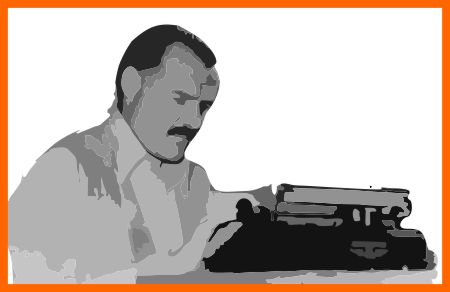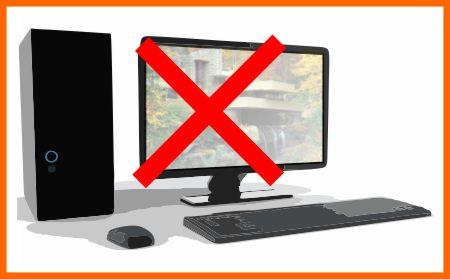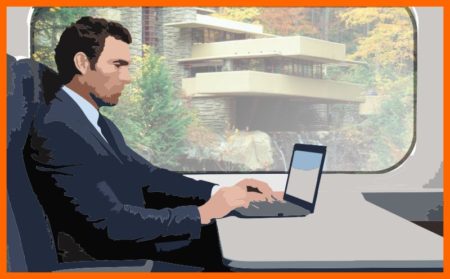You have a dream client and have received a generous deposit but inspiration will not come. You stare at your computer screen or notepad in frustration but – nothing. Do not panic, creator’s block is normal. Follow the strategies summarized below:
Creator’s Block is Normal: Expect it!
Whether you are a writer, architect, designer, or artist, creator’s block often occurs. Be realistic and adopt the philosophy of the Stoic: expect creative blockage and plan for it.
Remember

- In the words of Ernest Hemingway “there is nothing to writing: all you do is sit at a typewriter and open a vein”
- That creative productivity always has peaks and valleys.
- That the design process inevitably involves failure – you will come up with dozens of ideas and all but one of them will be discarded.
- That creative block is often nothing more than a fear of failure – consult a psychiatrist if this condition is chronic.
As an Amazon Associate, I earn from qualifying purchases.
Background Preparation
Before tackling any creative project be sure to put the foundations in place:-

- Get enough sleep and eat well.
- If you have too much work – learn to say no.
- Figure out your most creative period in the day and use it.
- Determine your most creative location – the tranquility of the countryside may be more conducive to work than a busy office in the city.
- Establish a routine – create a habit by committing a specified block of time to your creative work. Most successful writers or designers have a consistent daily timetable of work.
- Be prepared to put in the time. Inspiration is for amateurs – the rest of us just show up and get to work.
- Consider the customer but remember that very often their opinions must be disregarded in their own interest. Most of the time the client doesn’t know what he wants.
- Study the client’s website/facebook and other social media pages – surf the web for images.
- Identify the constraints of the project: price, size, length, style, color, time etc. remember that boundaries are not barriers to creativity.
Making a Start
The most crucial tip is to MAKE A START – the longest journey begins with the first step.

- Capture your initial thoughts and inspirations using the constraints established above.
- Start somewhere – just do it! the best way to start is simply that – give yourself permission to write, draw, or design badly.
- Remember bad ideas are better than no ideas. Get them down then revise — just start!
- Keep track of your ideas using a notebook, iphone or apps.
- Divide your projects into manageable chunks. You will be less intimidated if you tackle them one at a time.
- Be ready to ditch a bad idea, but do not abandon the work – finish what you have started even if it is not perfect (it never is).
When you Get Blocked
You know that creative blocks are inevitable so do not panic – follow these strategies:
Network with Colleagues and Friends
- Discuss the project with colleagues: if you have a design team at work – try a brainstorming session.
- Talk to creative people in other disciplines – they will give you a different way of looking at the world.
- Get feedback from family members and non-specialists. The most novel ideas can come from people unencumbered by prejudice.
Try These Design Strategies

- Turn off the computer and take out a sheet of paper. Doodle with pencils or crayons.
- Revisit previous successful projects.
- Try a new design tool or plugin.
- Try lateral thinking – if you are in a hole, digging deeper will not help. Read the original source book by Edward de Bono available on Amazon.
- Borrow or “steal”: Try to recreate the work of others that you admire. Try to figure out their process secrets, how the work is put together. Read “Steal Like an Artist” by Austin Leon – available here on Amazon.
Leave the Office
Getting away – and it doesn’t matter where you go – is an aid to effective thinking. Our thoughts are shackled by the familiar. Traveling and experiencing new faces and foreign cultures loosens up these constricted thoughts, making it easier to see things from new perspectives.

- Change the scenery – move out of your comfort zone.
- Brainstorm at Starbucks or on the train. Observe the world around you.
- If you have time – take a vacation or go on a cruise.
- Go for a walk – see exercise below.
Exercise
Numerous lines of research show that, in addition to the physical health benefits, exercise changes the brain in ways that protect memory and thinking skills.

- Go for a walk – a Stanford University study showed that walking increases creativity and that the exercise of walking is more important than the location of the walk.
- Take vigorous exercise then shower and get squeaky clean – the stream of water has a positive effect on creativity.
Relax
Never be afraid to take a break but keep a notebook or cell phone handy. Specifically

- Try meditating – subscribe to the “Waking up” podcast from Sam Harris – it will change your life.
- Listen to your favorite music, strum on your guitar.
- Do a boring task: There are tons of things you can do to relax your creative muscle and still do something productive: try reorganizing your filing system, doing your taxes, or cleaning your office – sometimes decluttering will declutter your mind.
- Binge-watch Columbo reruns – marvel at the acting of Peter Falk.
- Chances are that after doing routine jobs for long enough you’ll be craving creative work.
Try the Frank Lloyd Wright Method

If all these methods fail and you are still stuck – use the Frank Lloyd Wright method explained in detail in this companion blog post.
- When facing a block, submit the design to the process of subliminal filtering. Put an image representing the problem on your nightstand, contemplate, and dream.
- After an appropriate interlude (typically at least 5 weeks) challenge yourself by setting an artificial deadline two days ahead.
- Spend deadline day minus 1 closeted in your office, with strong coffee. The impetus of the adrenaline generated by the fear of missing the deadline, combined with the accumulated subconscious wisdom will often release your inhibitions and allow a neural download to take place.
Challenge the Stained Glass Artists at Artistry in Glass
Test the validity of these design methods by consulting the creative artists at Artistry in Glass to design the perfect glass art for your residence, church, or business.
See how the artists at Artistry in Glass use their creativity to design unique abstract works of art. Study the design process here.
If you share John Wakefield’s admiration for Frank Lloyd Wright – study the ways in which Artistry in Glass can create your very own Prairie-style masterpiece.
All you need to know about art glass
Commissioning stained and etched glass
- Stained glass designs from Artistry in Glass
- How to commission a stained glass window – complete advice
- How to commission an etched glass window
- How to choose the best stained glass design
- Etched or stained glass – which is better for your home?
- How much does stained glass cost?
- How much does etched glass cost?
Technical information
- Is leaded glass dangerous? Learn the facts.
- How to replace broken patio table glass
- Plexiglass and glass – what are the pros and cons?
- What is plexiglass used for?
- What costs more – glass or plexiglass?
- Preservation of stained glass in churches & synagogues
- How does stained glass get colored? learn from an expert!
- Is your broken stained glass panel worth repairing?
- How to protect stained glass in religious buildings
- How to care for and clean stained glass
- How to repair cracked stained glass
- What is Dalle de Verre?
- How to repair Dalle de Verre
- What to do about bowed & sagging stained glass
- How to care for a stained glass skylight
- Can my stained glass lampshade be repaired?
- What is the difference between sandblasting & etching?
- Obscure and frosted glass – all you need to know!
- How to save money when buying glass
- Glossary of important terms used in decorative glass
- 14 Ways to sell stained glass
- What is imitation or faux stained glass?
Guides to stained glass design
- Guide for designing abstract stained glass
- Why choose abstract contemporary stained glass
- How to design a Frank Lloyd Wright-style window
- Designing a WWII-era stained glass Waco glider
- Stained glass and Black Lives Matter
- How Is stained glass used today?
Artistry in Glass was your source for antique repair in Tucson
Check out this amazing selection of informative articles:-
- Where can I get antiques repaired?
- Are broken antiques worth fixing?
- How to fix a broken picture frame
- How to repair a broken china plate
- How to repair a broken china teapot
- How to fix a broken marble slab
- How to repair a broken china coffee mug
- How to repair a 2000-year-old sculpture
- All about repairing stained-glass lampshades
- How to care for your stained glass skylight
- How to repair Dalle de Verre
- Is stained glass worth repairing?
- To repair or toss out?
- Tucson crystal & china repair a division of Artistry in Glass
- What to do with broken antiques
- Is lead crystal dangerous?
- Repairing an antique Mexican statue
- Repairing religious statues
- The history of Swarovski crystal figurines
- How to find the value of a Swarovski Crystal figurine
- Have Swarovski crystal figurines lost value since 2009?
- How to collect Swarovski annual ornaments
- How to display Swarovski crystal figurines
- How to authenticate a Swarovski crystal figurine
- How to display Swarovski annual ornaments
- How to clean Swarovski crystal figurines
- How to repair a Swarovski crystal mouse
- How to repair a Swarovski annual ornament
- How to repair a Swarovski crystal train set
- Fixing broken wine glass stems
- How to clean cloudy glasses
- Why do wine glasses have stems?
- Swarovski Crystal Figurines
- How to repair a chip in a wine glass
- How to fix a scratched glass tabletop
- How to replace a broken patio tabletop

